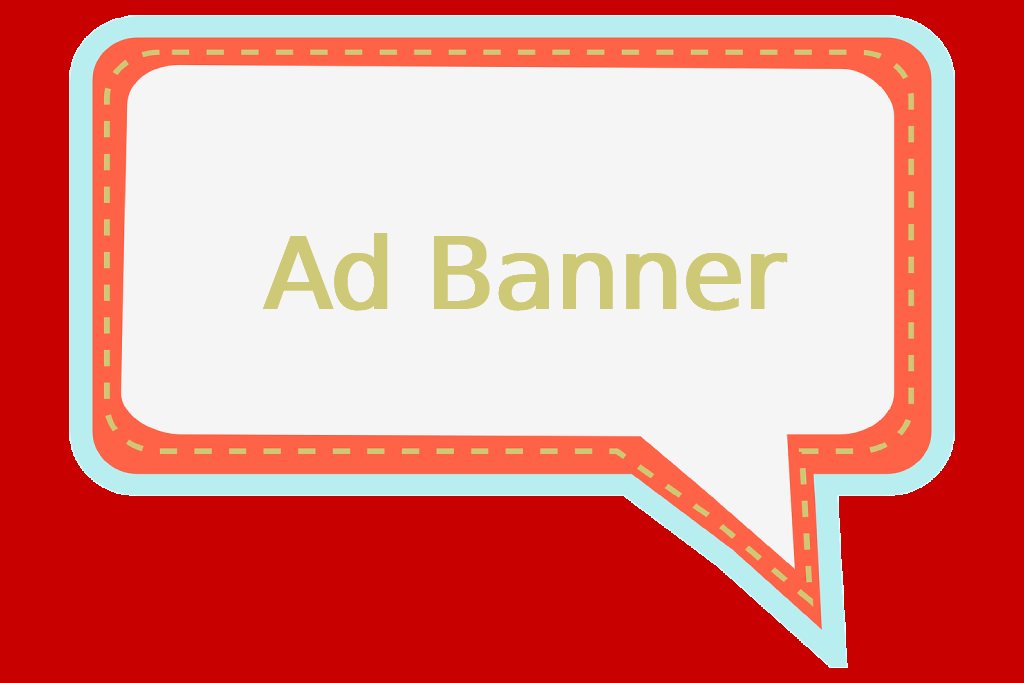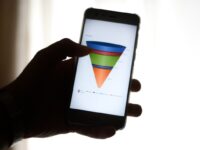How Big Should An Ad Banner Be?

When we talk about online advertising, sometimes we get so into the subject that we forget to explain the basics. If you take a tour of this blog, you will see that we have published posts of all kinds: from those designed for system administrators to those created for beginners in WordPress. We also have a whole section dedicated to digital marketing, in which more than once we have talked about different online advertising platforms.
And yet, what we have never done is explain what a banner ad is and how it works. We have also never explained which banner sizes work best on each ad platform. Today we are going to solve this issue once and for all.
Table of Contents
What Is A Banner Ad And How Does It Work?
A banner ad, or web banner, is an ad in a still image format (such as .png or .jpg) or with animation (such as .gif) that is displayed on a web page. Ad banners, therefore, can be static or animated elements, depending on the technology used to create them. They can appear at the top or bottom of a page, as well as between the content itself or in vertical format in the sidebars.
The purpose of banner ads is to promote a brand or project and drive traffic to the advertiser’s website. So that you understand me better, a web banner fulfills exactly the same function as a poster in a store window: to encourage you to enter by offering you a great discount or showing you a new product, for example. In the same way, if you click on the image or multimedia element that makes up the ad banner, the browser will take you to the advertiser’s website and there you will be able to see all the details.
Advertising through banners (or display advertising) consists precisely in placing these ad banners in areas with high visibility of the websites that offer their spaces for this purpose. The ad platform (Bing Ads and Google Ads will probably sound familiar to you) will track impressions, clicks, and other banner-related metrics. As an advertiser, you will also be able to choose keywords, browsing behavior and the theme of the website that provides space for your banners. In this way, you can better control who is the recipient of your display advertising.
On the other hand, we cannot forget social networks such as Facebook or Instagram. They also allow advertising using image formats or animated elements, so below we will see the most successful ad banner sizes in one and the other. Of course, in the case of Facebook and Instagram, the banners are not displayed on websites that give up their available spaces, but within the interface of the social network itself. To know the results of your campaigns, you will have to install the Facebook pixel on your website.
Despite their relative simplicity, banner ads are a very important visual element on the Internet. In general, people react better to content or visual messages such as photographs, videos, infographics or illustrations. Later, I’ll share with you some basic tips for getting web banners that work, stand out, and achieve your goal of getting traffic. Used well, banner ads can have a huge impact on the success of your business.
What Are The Most Common Sizes For Banner Ads?
If you’re new to banner advertising, you’re probably not sure what the most common banner ad dimensions are. The size of the banner is going to have a very important effect on its performance: if you choose it correctly, the results of your advertising campaigns can improve significantly; on the other hand, if you don’t optimize your ad banners for maximum performance, you risk wasting your money.
Each display advertising platform offers several specific size possibilities that you, as an advertiser, can choose from. Next, we will talk in detail about the three most important:
- Google Ads
- Facebook Ads
- Instagram Ads
Once you are clear about the ad banner sizes that you can use on the advertising platform of your choice, like everything in life, it is best to test things. Run A/B tests to see which banner dimensions work best for your target audience. You may be surprised and for some reason your audience clearly prefers one size over another.
Most Successful Google Banner Sizes
Using Google Ads continues to be one of the most effective methods of driving traffic to your website. A good display campaign can drive potential customers to the landing page of your choice and earn you the opportunity to move them further down the conversion funnel. Now, when you are preparing to invest your advertising budget in Google Ads, it is very important to take into account the ad banner sizes that will generate more impressions, clicks and conversions.
If you choose the wrong size for your ads, you will limit the impact of your ad campaign. Remember that each size of the banner in Google Ads will obtain different results and a different click rate: you should not limit yourself to only one or two sizes, since this would limit you excessively (remember that many people already use ad-blockers and tools similar, which lower the CTR of your banners). Instead, use a greater number of different sizes to improve the ROI of your campaigns.
And, to choose the most successful Google Ads banner ad sizes , it’s best to go to the most trusted source of all: Google itself . They themselves have created a table with the best performing ad sizes for advertisers. Let’s see them!
300×250 – Medium Rectangle
Unlike the medium rectangle, the large rectangle doesn’t usually look good on smartphones, but it’s great for PC navigation and works well both between content and at the end of an article.
728×90 – Leaderboard
This type of ad banner is usually placed at the top of the web page, so it is the first thing the visitor sees when they land on the web page. Google also recommends it, especially for use in forums.
300×600 – Skyscraper
Because it takes up a lot of space on the page, this ad banner size is also known (somewhat exaggeratedly) as “half page”. It will give you plenty of space to create a design that will grab the attention of your audience. It is always on the right hand side of the page, which is also a hotspot where the user often rests the mouse during navigation (more chance to attract attention and click!).
320×100 – Large Mobile Banner
One of the most popular ad banner sizes when we think about smartphone usage. Taking into account that we are browsing more and more time from mobile phones, I advise you to try to maximize the impressions and click rates you get from these devices. This banner size, along with 320×50 (mobile leader board) and 320×250 (medium rectangle), are your best options.
Other Sizes And Adaptable Display Ads
The above are the best performing Google Ads ad banner sizes, but Google Ads supports many other sizes.
Also, you should not forget the existence of Google Ads responsive display ads. To create them, you must first prepare certain resources: titles, descriptions, images, the logo of your project… Google will automatically adjust the size and appearance of these elements and will accommodate them correctly in the available advertising space, adapting them to maximize results.
With responsive display ads, Google is in charge of testing and optimizing your ads. In this link you have all the information you need to learn how to create your first responsive display ad. Lucky!
Most Successful Facebook Banner Sizes
Facebook continues to have considerable weight as an advertising channel, despite the introduction of new players in the catalog of social networks (yes, TikTok, I’m looking at you). Today, around 30% of the world population uses Facebook, which is not a negligible percentage. And to take advantage of Facebook ad banners, you will need to know the sizes that the platform requires depending on the location where you want to display them. Right now I will tell you what are the 3 most important types of Facebook ads. Keep reading!
Facebook Feed Ad Size
Facebook feed ads are the most used. They appear mixed between the updates of friends, groups and pages of interest to the user and can be made up of images, animated GIFs or videos.
The recommended size for the images of the ads that will be placed in the Facebook feed is 1080×1080 pixels (however, 600×600 is the minimum size accepted), although you can also use the horizontal image size, which it is 1200×628. What you should also pay attention to is the size of the file, which should not exceed 30 megabytes.
Facebook Carousel Ads Size
They also appear within feed content, but Facebook carousel ads include multiple images or videos (instead of just one) that are displayed as a gallery or slider.
The requirements for this type of ad are similar to single image ad banners: 1080×1080 pixels with a maximum weight of 30 megabytes per image. If I’m not mistaken, you can add up to 10 images or videos.
Facebook Right Column Ad Size
The ads in the right column of Facebook are only shown to users who use the application from the computer. Users who access the Facebook app through their smartphone will not be able to view these ads.
The required size for these banners is 1200×1200 pixels. The maximum weight is the same as in the other cases, 30 megabytes.
Facebook Stories Ad Size
Facebook Stories banner ads must have a size of 1080×1920 pixels, since the format in this case is vertical. Images in Facebook stories remain visible for a maximum of 5 seconds (unless the user skips to the next story), while if you upload a video it can last up to 15 seconds. You can also mix still images with shorter videos, if you want.
What is important is that you remember to leave a margin of about 250 pixels at the top and bottom of your story, since both your profile image and your call to action will be included there.
Most Successful Instagram Banner Sizes
Instagram is, right now, a gold mine when it comes to opportunities to interact with users. Many webmasters have already gotten down to business and have integrated this social network into their website (there are already all kinds of Instagram plugins for WordPress, for example). Creating the perfect Instagram ad can be a bit daunting, but always having the right sizes on hand for each type of banner will make it a little easier.
Instagram Feed Ad Size
Instagram feed ad banners can have different ratios, although the platform recommends a square format of 1080×1080 pixels. If you want to use a landscape image, the size should be 1080×566. On the other hand, if you want to use a vertical image, it must measure 1080×1350 pixels.
Instagram Stories Ad Size
Instagram Stories banner ads must have a size of 1080×1920 pixels, since the format in this case is vertical. Instagram story images remain visible for a maximum of 5 seconds (unless the user skips to the next story).
Since Instagram stories come with features like GIFs, stickers, and the like, you can easily instruct viewers to click or swipe to see more information.
Instagram Carousel Ads Size
Instagram carousel ad banners are perfect for getting users to slow down their unstoppable scrolling pace and linger a little longer on your message. To achieve this, you must upload up to 10 images of 1080×1080 pixels (each of them can link to a different landing page).
Instagram carousel ads are perfect for displaying different products, or for showing the same product from different angles or in different colours.
Also Read: How To Take Advantage Of Social Listening To Get To Know Our Customers






